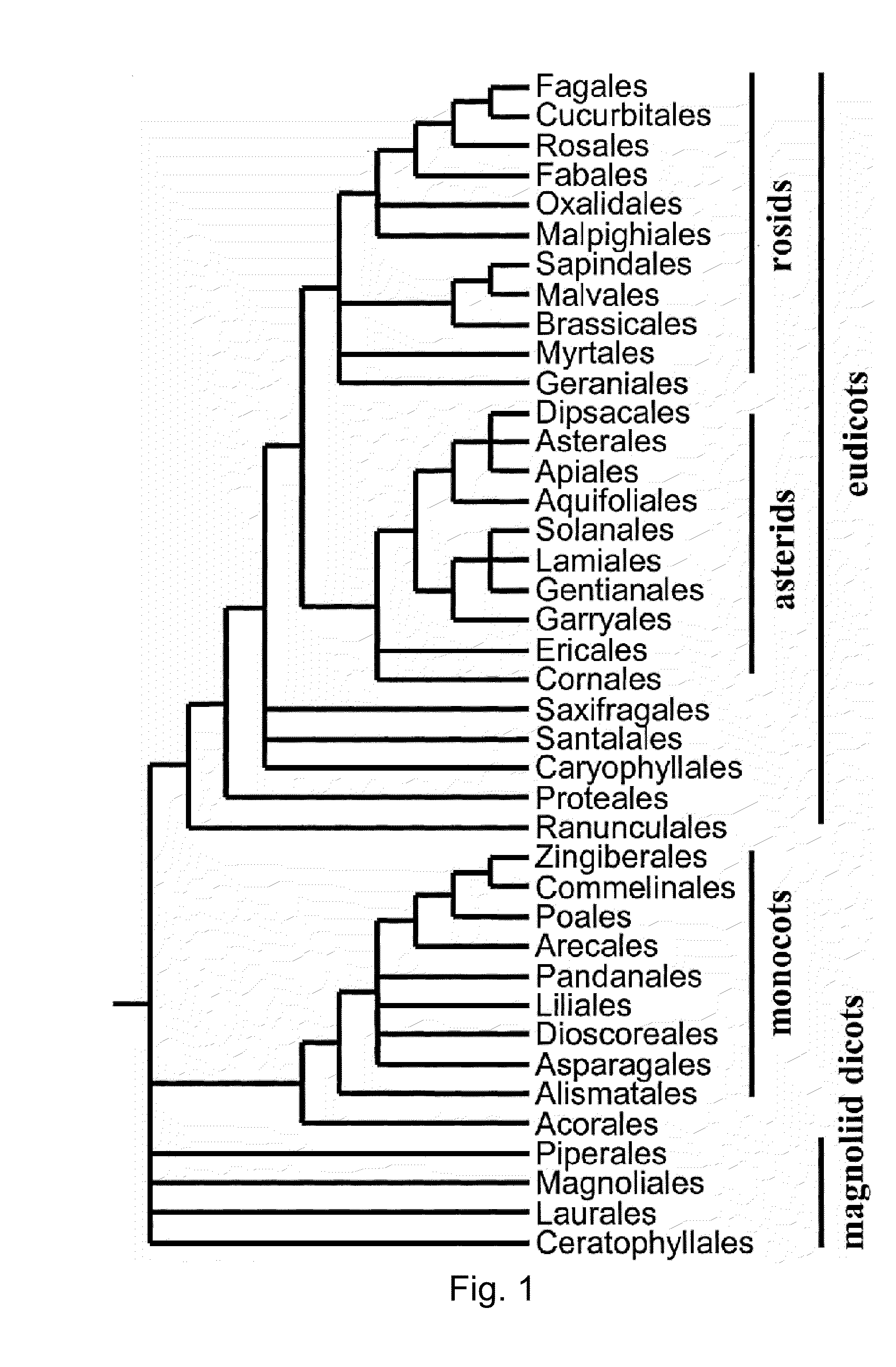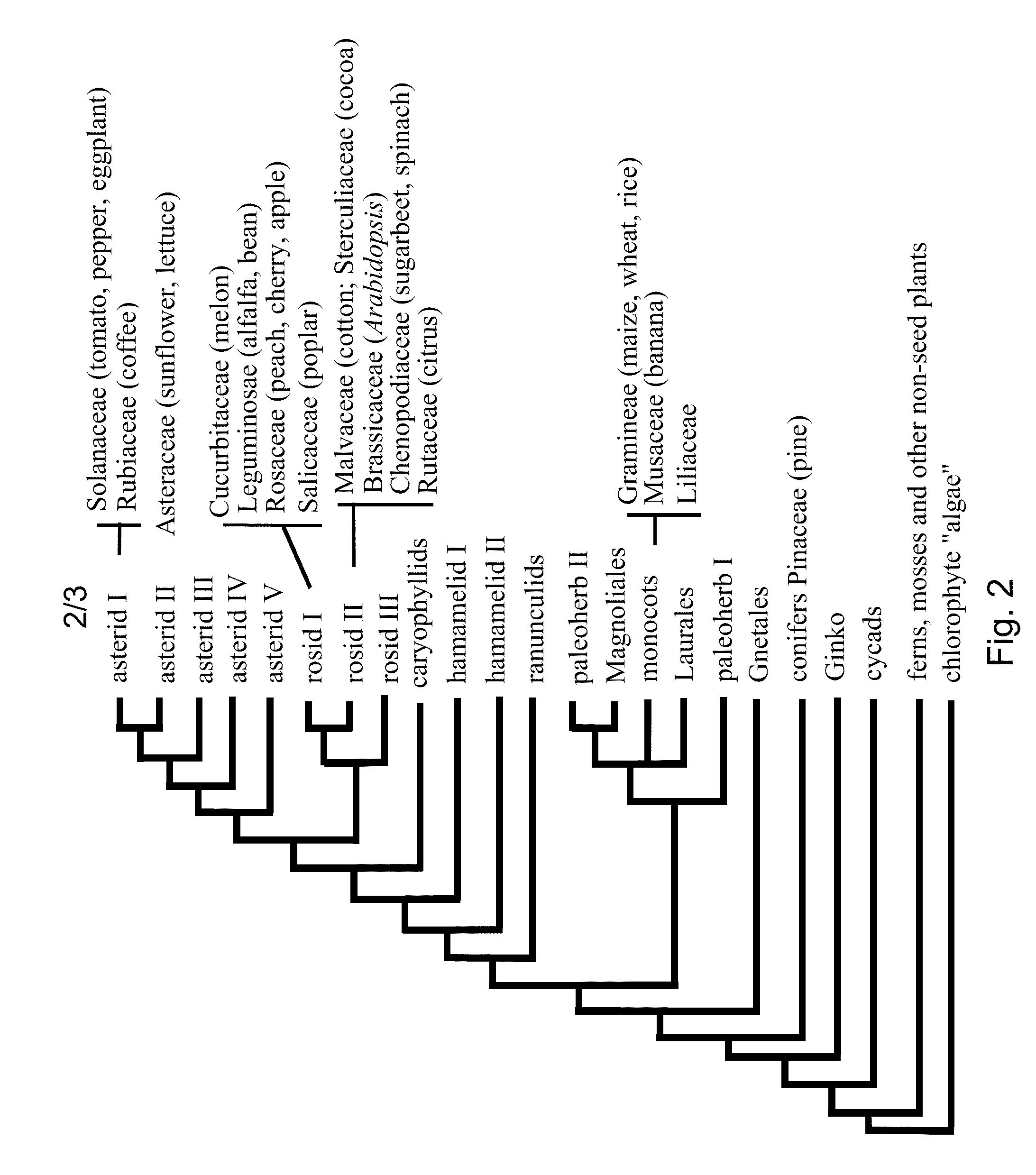Plant quality with various promoters
a technology of promoters and plants, applied in the field of plant quality with various promoters, can solve problems such as direct impact on yield, and achieve the effects of increasing fruit weight, yield or quality characteristic, and increasing fungal disease resistan
- Summary
- Abstract
- Description
- Claims
- Application Information
AI Technical Summary
Benefits of technology
Problems solved by technology
Method used
Image
Examples
examples
[0188]It is to be understood that this invention is not limited to the particular devices, machines, materials and methods described. Although particular embodiments are described, equivalent embodiments may be used to practice the invention.
[0189]The invention, now being generally described, will be more readily understood by reference to the following examples, which are included merely for purposes of illustration of certain aspects and embodiments of the present invention and are not intended to limit the invention. It will be recognized by one of skill in the art that a transcription factor that is associated with a particular first trait may also be associated with at least one other, unrelated and inherent second trait which was not predicted by the first trait.
example i
Isolation and Cloning of Full-Length Plant Transcription Factor cDNAs
[0190]Putative transcription factor sequences (genomic or ESTs) related to known transcription factors were identified in the Arabidopsis thaliana GenBank database using the tblastn sequence analysis program using default parameters and a P-value cutoff threshold of B4 or B5 or lower, depending on the length of the query sequence. Putative transcription factor sequence hits were then screened to identify those containing particular sequence strings. If the sequence hits contained such sequence strings, the sequences were confirmed as transcription factors.
[0191]Alternatively, Arabidopsis thaliana cDNA libraries derived from different tissues or treatments, or genomic libraries were screened to identify novel members of a transcription family using a low stringency hybridization approach. Probes were synthesized using gene specific primers in a standard PCR reaction (annealing temperature 600 C) and labeled with 32P...
example ii
Strategy to Produce a Tomato Population Expressing all Transcription Factors Driven by Various Promoters
[0194]Ten promoters were chosen to control the expression of transcription factors in tomato for the purpose of evaluating complex traits in fruit development. All ten are expressed in fruit tissues, although the temporal and spatial expression patterns in the fruit vary (Table 2). All of the promoters have been characterized in tomato using a LexA-GAL4 two-component activation system. The PID (Plasmid IDentifier) and PID SEQ ID NOs used in the field study to drive expression of the sequences of the invention are listed in the second column.
TABLE 2Promoters, promoter constructs and expression patterns used in the field studyPID and SEQID NO: ofpromoterPromoterconstructGeneral expression patternsReferencesCaMV35S (“35S”)P6506Constitutive, high levels of expression inOdell et al (1985)SEQ ID NO:all throughout the plant and fruit4837SHOOT MERISTEMLESSP5318Expressed in meristematic ti...
PUM
| Property | Measurement | Unit |
|---|---|---|
| nucleic acid sequence | aaaaa | aaaaa |
| weight | aaaaa | aaaaa |
| volume | aaaaa | aaaaa |
Abstract
Description
Claims
Application Information
 Login to View More
Login to View More - R&D
- Intellectual Property
- Life Sciences
- Materials
- Tech Scout
- Unparalleled Data Quality
- Higher Quality Content
- 60% Fewer Hallucinations
Browse by: Latest US Patents, China's latest patents, Technical Efficacy Thesaurus, Application Domain, Technology Topic, Popular Technical Reports.
© 2025 PatSnap. All rights reserved.Legal|Privacy policy|Modern Slavery Act Transparency Statement|Sitemap|About US| Contact US: help@patsnap.com



